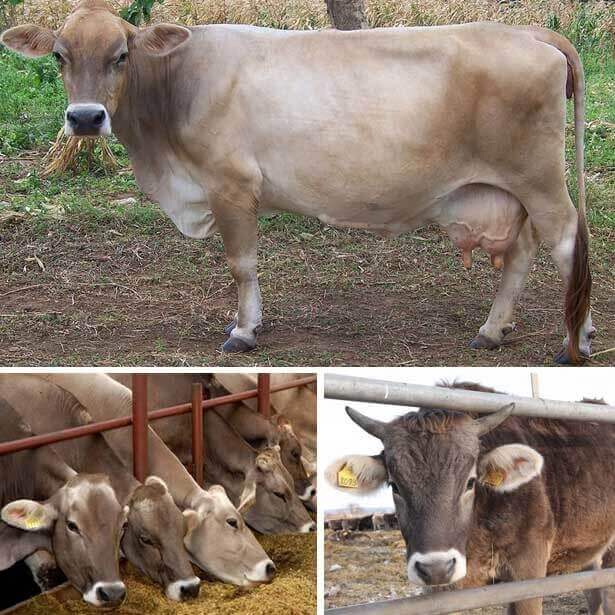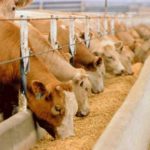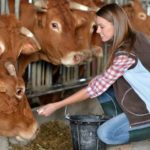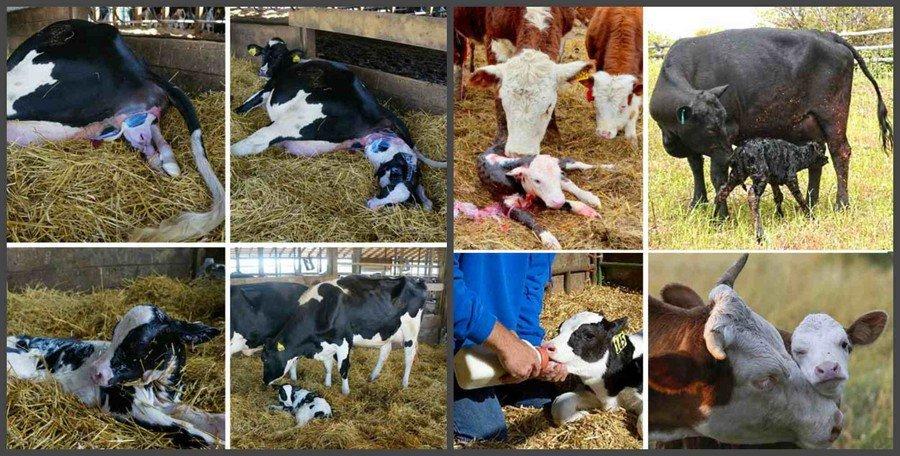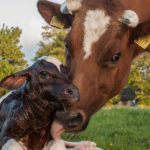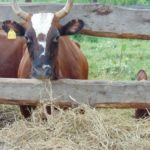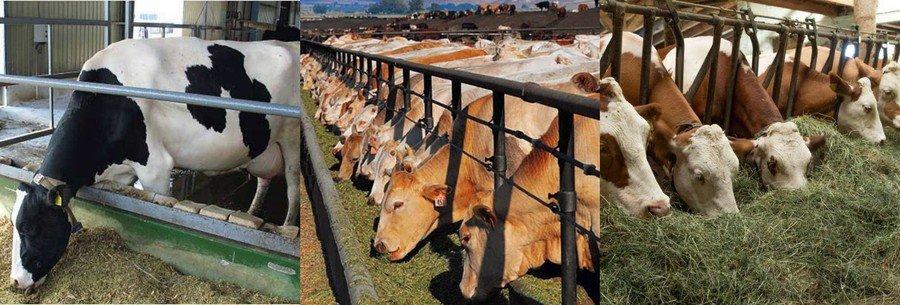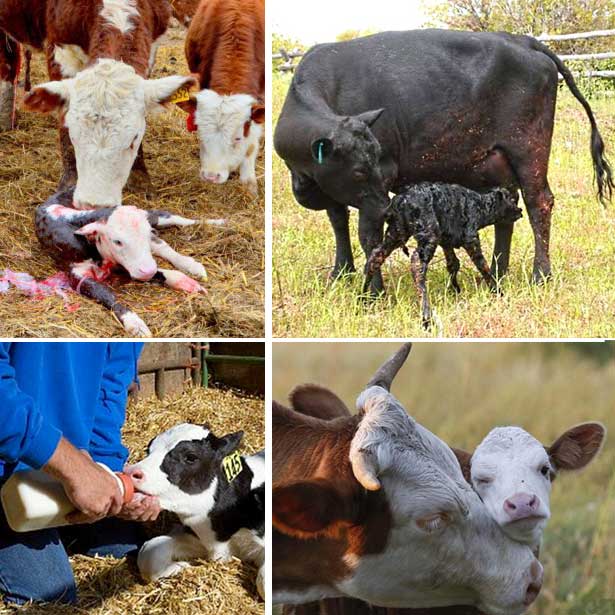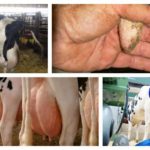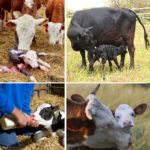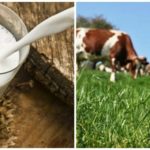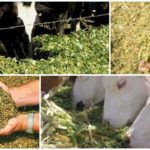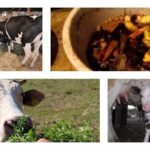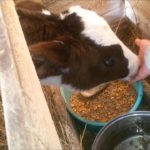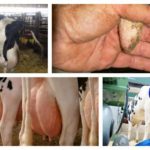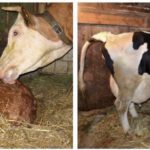Every farmer carefully prepares for the birth of offspring from cattle. Therefore, the question of how to properly feed a cow after calving worries him more. If you prepare the cow in advance, feed it correctly, providing it with a supply of nutrients, then there will be no problems after birth. Carefully developed complementary foods, taking into account the recommendations of specialists, will help with this.
What can you give?
The quality of nutrition after calving is given great importance. The animal receives vitamins and essential minerals from various types of feed.
Green food
The summer diet consists of fresh green grass and legumes. They contain proteins, amino acids, and vitamins necessary for the animal. Green food is an easily digestible food that has a beneficial effect on the body.
Roughage
Hay and straw are roughage. It is used in winter due to the lack of fresh grass. Prepared in the summer, roughage is not inferior to green. Nutrients and vitamins are present in it in constant quantities.
Juicy feed
Succulent feed consists of vegetables, silage, and root crops. They contain carbohydrates that stimulate the appetite of animals. With their help, dry ingredients are more easily absorbed and water consumption is reduced.
Concentrates
Compound feed, grain crops, and bran are classified as concentrates. They help protein enter the animal’s body and are an indispensable additive to the main feed of cattle.
How to properly feed a cow after calving at home
Complementary feeding should begin 30 minutes after calving. Warm water and hay are suitable for this. In the first days, the heifer is given meadow hay and wheat bran. On the third day, a mixture is used, which includes bran, oats and flaxseed meal. The weight of the mixture prepared in this way is 1.5 kilograms.
Advance nutrition is calculated based on their desired milk yield. The cow is given more concentrated feed. To get an additional 1 liter of milk you need 0.5 kilograms of feed unit.For example, a cow is given 1.5 kilograms of grain and 5 root vegetables. This will increase milk yield by 3-5 liters. Advance nutrition of 20% increases the fat content of milk by 0.2%.
Feeding cows during milking period
After the baby is born, the cow's milk begins to flow. It is necessary to carry out comprehensive measures for the maintenance, feeding, and milking of livestock. The amount of food eaten must correspond to the energy expenditure for milk production. To do this, concentrates are added to the animal’s diet.
Starchy foods in large quantities lead to increased stomach acidity. In this environment, beneficial microorganisms that process fiber cease to cope with the task. The maximum volume of concentrates per meal should not exceed 4 kilograms. In the morning the cow needs to be watered. Give fresh grass before feeding. Nutritional scheme during malnutrition:
- Compound feed contains particles of flour and sugar. This is necessary to reduce the harm of large amounts of concentrates when feeding.
- Thrifty farmers stock up on concentrated feed in advance. Pulp and bran are used as such feed.
- Proteins are a necessary supplement to provide the cow with strength and energy. A lack of protein reduces milk production, and an excess is excreted in the urine. Milk production does not increase. Crude protein in the total feed volume should not exceed 16%.
To calculate feed, the following indicator is taken: 1 feed unit is required per 100 kg of weight during the milking period. With a milk yield of 12 liters of milk, 10 feed units are required, with 20 liters - 12 units. The number of feed units is directly proportional to the amount of milk produced.
What do experts prepare for cows?
According to the experience of livestock breeders and farmers, it is necessary to change the diet every 14 days. In order for the cow not to feel discomfort, this process must be gradual. After calving, a cow needs a varied diet, so specialists prepare the feed in advance. Juicy food must be included in the diet.
First, experienced farmers give the animal warm water at room temperature, then feed it silage and root vegetables. Concentrates are usually given in daytime feeding. Evening food consists of hay and straw.
Double feeding and milking reduce maximum milk production, so you shouldn’t limit yourself to this. If you follow the necessary standards, the quantity and quality of milk will be significantly higher. Insufficient feeding reduces nutrient absorption. Additional labor costs for feeding and caring for three times a day lead to an increase in the quantitative indicators of milk.
When maximum productivity is achieved, the number of milk yields can be reduced. The primary importance of feeding the cow fades into the background. Two meals a day will be enough. At the same time, the amount of milk decreases by 2%. The diet remains the same. The heifer needs to accumulate energy and new strength for further reproduction of cubs in advance.
Features of feeding in winter
The quality and quantity of milk, as well as the health of cattle, depend on proper feeding in winter. Winter nutrition consists of silage, hay, root crops and straw. Rough and dry food replace green grass. For every 100 kg of livestock weight, 5 kg of dry feed is required.
A balanced diet, rich in minerals and biologically active substances, prevails during this period. If the cow is fed only silage, it is necessary to normalize the amount of sugar in the body with appropriate feed. Beetroot is given to cows whose milk yield exceeds 10 liters. Urea compensates for the lack of protein. Pulp and spent grains will balance winter nutrition. Beer grains are a free and affordable complementary food. It is found in large quantities in breweries. The daily diet of livestock includes:
- Roughage – 37-39%.
- Juicy food – 34-35%.
- Concentrated feed – 28%.
| Feed | Milk yield – 8 liters | Milk yield – 12 liters | Milk yield – 16 liters | Milk yield – 20 liters | Dry cows |
| Straw, kg | 5 | 4 | 3 | 3 | 3-5 |
| Silage, kg | 10 | 15 | 15 | 15 | 5-7 |
| Root vegetables, kg | 5 | 10 | 15 | ||
| Concentrates, kg | 1 | 1,5 | |||
| Salt, g | 50 | 60 | 74 | 100 | 50 |
Before feeding, hay and straw are finely chopped and poured with hot salted water. With the help of calcium, phosphorus and potassium, the feed is enriched with vitamins necessary for livestock. It is forbidden to feed the heifer frozen feed, this will help avoid the occurrence of diseases.
Possible risks and problems
The reproductive system of the heifer and the condition of the udder after calving should be given great importance.
Placenta retention
If the placenta has not come out 6 hours after calving, the cow should be shown to a doctor. Reasons for placenta delay:
- The pregnant cow received poor quality feed.
- Nutrients entered the body in insufficient quantities.
- The pregnant animal was rarely walked. The muscles of the uterus lost the ability to contract, which led to dystrophy.
- Stretching of the uterus or the presence of inflammatory processes.
Udder problems
After giving birth, the heifer's udder may swell. This is a sign of breastfeeding. It is necessary to stop milking the animal and allow the calf to approach her.The baby will help dissolve the udder and the swelling will subside. The udder must be expressed to such an extent that not a single drop remains there. If it comes to mastitis, the veterinarian examines the cow and prescribes treatment. Bicillin is usually used. During treatment, milking of cattle is not stopped. For the udder, use Vishnevsky ointment or “Rigefen”.
Paresis
Poor nutrition and calcium deficiency can cause paresis. This disease damages the heifer's central nervous system and brain. This is a viral disease. The cow experiences paralysis of the limbs and decreased sensitivity of the skin. The animal stops eating, drinking, hardly walks, and body temperature drops to a minimum. If the heifer is not treated, the animal may die. Usually the doctor prescribes calcium chloride in droppers, glucose with Calfoset. Careful care of livestock will help to avoid problems, and the appearance of new offspring will bring joy.

